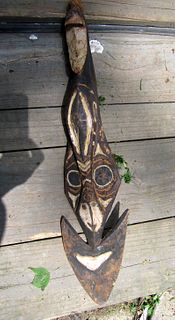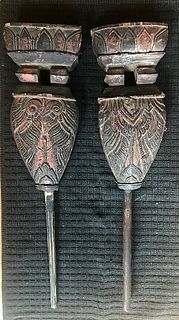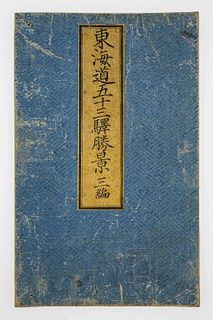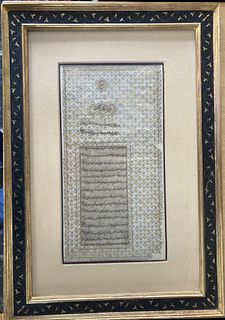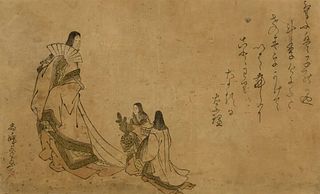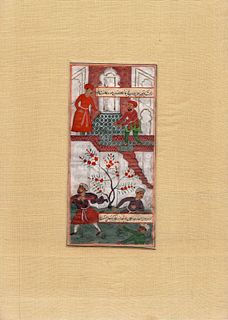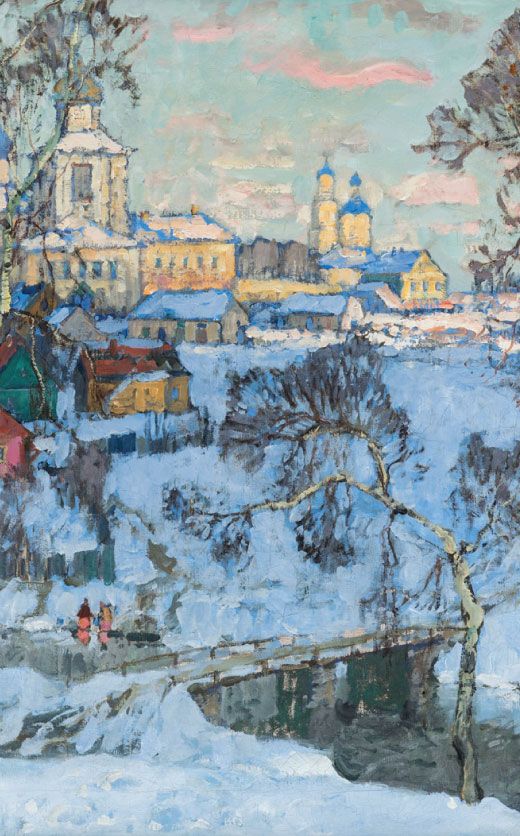18th C. Chinese Gilt Wood Fertility God Niangniang
About Seller
686 S Taylor Ave, Ste 106
Louisville, CO 80027
United States
Selling antiquities, ancient and ethnographic art online since 1993, Artemis Gallery specializes in Classical Antiquities (Egyptian, Greek, Roman, Near Eastern), Asian, Pre-Columbian, African / Tribal / Oceanographic art. Our extensive inventory includes pottery, stone, metal, wood, glass and textil...Read more
Two ways to bid:
- Leave a max absentee bid and the platform will bid on your behalf up to your maximum bid during the live auction.
- Bid live during the auction and your bids will be submitted real-time to the auctioneer.
Bid Increments
| Price | Bid Increment |
|---|---|
| $1 | $25 |
About Auction
May 1, 2025
Showcasing an extraordinary array of artifacts and art, including Egyptian, Greek, Roman, Etruscan, Near Eastern, Asian, Pre-Columbian, Native American, Tribal, Oceanic, Spanish Colonial treasures, fossils, fine and visual arts, and more! All ancient items are ethically sourced and legally available for sale. Enjoy the ease of in-house shipping for a seamless experience! Artemis Fine Arts info@artemisfinearts.com
- Lot Description
East Asia, China, Qing Dynasty, ca. 18th century CE. A striking, gilt and painted woodcarving portraying Niangniang, the revered Taoist Deity of fertility, known as "The Maiden Who Brings Children" (often distinguished from Songzi Guanyin). This fine provincial piece depicts her seated with serene grace on a backless throne, its footrest adorned with carvings. Her refined features include a delicate short nose, pursed lips, and lotus-shaped eyes framed by pendulous ears, symbols of her enlightenment. She gazes gently upon three small children seeking her protection: a boy nestled in her lap, and a boy and girl at her knees reaching out to her. Represented as an empress, akin to Xiwangmu and Mazu, her hair is styled in a topknot. Her elaborate attire, befitting a Taoist deity, features a high-collared, flowing gilt robe with intricate designs, cinched at the waist with a sash and embellished with two stylized flowers. The consecrated cavity in its back suggests it once graced a family altar or temple shrine. Size: 9.6" L x 16.1" W x 42.3" H (24.4 cm x 40.9 cm x 107.4 cm)
Niangniang, often called "The Maiden Who Brings Children," is a significant Taoist deity associated with fertility and the protection of mothers and children. While sometimes confused with the Buddhist figure Songzi Guanyin, Niangniang holds a distinct place within the Taoist pantheon, often depicted as an empress-like figure adorned in elaborate robes, symbolizing her divine status. Her serene gaze typically falls upon children, whom she cradles or watches over protectively, embodying compassion and reassurance for families seeking her blessings for conception, safe childbirth, and the well-being of their offspring. Revered on home and temple altars, Niangniang embodies the Taoist emphasis on harmony and the continuation of life.
The identification of individual Chinese religious statuary absent contextual information presents a considerable challenge due to the syncretic nature of Chinese religious beliefs, wherein various faiths ascribe analogous roles to deities, particularly female figures associated with fecundity, such as Guanyin and Mazu, a concept deeply rooted in Confucian familial ideology. The present large-scale sculpture evinces an amalgamation of Buddhist and Popular Religious elements, albeit with a discernible Taoist emphasis. This confluence is attributable to the concurrent historical development and subsequent intermingling of China's four principal religious philosophies: Buddhism, Taoism, Confucianism, and Popular Religion (the latter three being indigenous). This pervasive cultural exchange facilitated the assimilation of iconographic and theological attributes across traditions, as exemplified by this refined female deity who manifests influences from all four religious spheres, most notably bearing resemblance to the Buddhist Child-Bearing Guanyin. Consequently, it is posited that this image represents a Taoist divinity, potentially Yunxiao Niang Niang, whose visual representation has been informed by Buddhist and popular religious iconography. Such integration is characteristic of Taoism, a complex philosophical and religious system incorporating proto-scientific and magical elements with a focus on spiritual transcendence. Moreover, many deities within the Taoist and Popular Religious pantheons originated as historical individuals credited with miraculous deeds, who may have already garnered veneration among adherents of Buddhism or Confucianism prior to their formal enshrinement within temples.
Historically, carved figural statues held profound cultural and religious significance in China, serving not merely as decoration but as vital conduits for spiritual inspiration, solace, and ancestral veneration. These sacred objects populated homes, clan halls, temples, and public spaces, where altars and shrines honored familial ancestors and a pantheon of deities. The size and opulence of these dedicated spaces reflected a family's standing, with even modest homes featuring altars for expressing Confucian piety through ancestor worship. Wealthier families often dedicated entire rooms to elaborate shrines, housing images and ancestor tablets – inscribed placards acting as spiritual seats for the deceased, sometimes even found in temple halls where monks offered prayers for their well-being in the afterlife.
Central to imbuing these carvings with spiritual potency was the "eye opening ceremony," a consecration ritual performed by a senior priest or monk. This process, involving practices like dotting the eyes with cinnabar, pricking them, or anointing them with liquids, was believed to awaken the statue's senses, enabling it to perceive and respond to devotees' prayers. Before this ritual, a cavity carved into the statue's back was filled with sacred documents, prayers, and symbolic items representing inner organs, then sealed. The completed, veiled statue was then solemnly carried to the temple for the complex consecration, a communal event believed to imbue the inert carving with life force (chi or qi) and invite the deity's spirit to reside within. This animated state was believed to persist as long as the cavity remained sealed, making intact statues with their original contents exceptionally rare and deserving of continued reverence.
Provenance: private Los Angeles, California, USA collection, acquired from 1990 - 2005
All items legal to buy/sell under U.S. Statute covering cultural patrimony Code 2600, CHAPTER 14, and are guaranteed to be as described or your money back.
A Certificate of Authenticity will accompany all winning bids.
We ship worldwide and handle all shipping in-house for your convenience.
SHIPPING EXCEPTIONS: Due to customs clearance issues, we are unable to ship to Germany, Switzerland and Australia. If you live in Germany, Switzerland or Australia, you will need to provide an alternate shipping destination, or we will not be able to complete your purchase. In addition, please note that we are unable to ship ancient items back to the original country of origin (Egyptian to Egypt, Greek to Greece, etc.)
PAYMENT EXCEPTION: Unless a known customer of Artemis, payment for all gold / precious metal / gem lots must be made via Bank Wire Transfer or Certified Bank Check/Money Order, no exceptions.
#193608Condition
One hand of girl child and cover of bung or back cavity are missing. Hands and heads of children have been professionally reattached, repaired, and restored in areas. Repainting to parts of goddess and children. Chipping with loss to top of top bun. Some stable fissures to wood, as well as nicks and abrasions commensurate with age. Otherwise, nice presentation with good remaining detail and liberal pigments and gilding. Light patina throughout.
- Shipping Info
-
All shipping is handled in-house for your convenience. Your invoice from Artemis Gallery will include shipping calculation instructions. If in doubt, please inquire BEFORE bidding for estimated shipping costs for individual items.
-
- Buyer's Premium



 EUR
EUR CAD
CAD AUD
AUD GBP
GBP MXN
MXN HKD
HKD CNY
CNY MYR
MYR SEK
SEK SGD
SGD CHF
CHF THB
THB







